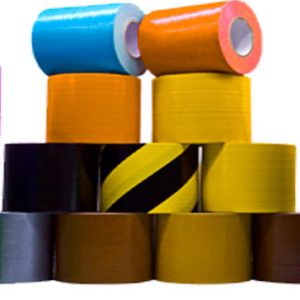Latex allergies, derived from the sap of the rubber tree, have witnessed a concerning uptick in recent decades. Manifesting in varied symptoms, from mild rashes to severe anaphylaxis, awareness and early detection are paramount. With healthcare professionals particularly at risk due to extensive glove usage, and common items like balloons and rubber bands containing latex, the demand for latex-free products has surged. Dr. Robert Wood of the American Academy of Allergy, Asthma, and Immunology emphasizes the significance of understanding and proactive management for improving patients’ quality of life.
Things to Know Before Reading the Article on Latex Allergies:
- Latex Origin: Latex is a natural product derived from the sap of the rubber tree, Hevea brasiliensis.
- Common Usage: Latex is ubiquitously used in a variety of products, from medical equipment like gloves to everyday items like balloons.
- Allergy Types: Not all reactions to latex are due to true allergies; some might be irritant reactions.
- Reactivity Range: Symptoms can range from mild skin rashes to severe, life-threatening anaphylaxis.
- Latex-Fruit Syndrome: There’s a known link between latex allergies and allergies to certain fruits, such as bananas and avocados.
- Healthcare Implications: Healthcare workers are particularly at risk due to frequent exposure from latex-based medical supplies.
- Alternatives Exist: With the rise in latex allergies, many manufacturers now offer latex-free alternatives for common products.
- Personal Stories: Throughout the article, we will introduce hypothetical scenarios or individuals (e.g., Sophia) to better illustrate certain points. These are not based on real-life events but are meant to provide a relatable context.
- Importance of Awareness: The overarching theme of the article emphasizes awareness, early detection, and proactive management of latex allergies.
Having this foundational understanding will enhance your comprehension and appreciation of the subsequent article’s details.
Introduction to Latex Allergies and Their Significance
“Latex allergies have shown significant growth over the last few decades. The widespread use of latex in medical equipment and everyday products means that both awareness and precautions are crucial. Early detection and management can make a significant difference in the patient’s quality of life.” – Dr. Robert Wood
 Download Image
Download ImageSize: 1456"x816
File Size: 101.16 KB
Many people are still confused between the three names latex, rubber, and plastic. To understand better, read more: is latex rubber or plastic?
Yet, with widespread use comes a caveat. A growing segment of the population finds themselves skirmishing with an unseen foe: latex allergies. Imagine a world where simple pleasures or necessary medical procedures become battlegrounds. For individuals with this allergy, that’s a haunting reality.
Latex allergies aren’t mere irritations. They’re complex immune responses, manifesting from mild skin irritations to life-threatening anaphylaxis. Depending on exposure type – direct contact or inhalation of latex particles – symptoms vary, further underscoring its unpredictability.
Recent years have cast a spotlight on this medical enigma. An upward trend in diagnosed cases paints a disconcerting picture. Yet, what’s the crux behind this surge? Some posit a heightened awareness, leading to more diagnoses. Others hypothesize that increased exposure, particularly in healthcare settings, is the catalyst.
Understanding the prevalence and significance of latex allergies is paramount. Not merely for those affected but for society at large. The gravity of this situation echoes louder when one ponders the potential consequences – a child’s birthday balloon or a routine medical checkup turning awry.
The ever-evolving landscape of latex allergies warrants keen attention. As we delve deeper into this world, remember the human side of the story. For behind every statistic is a person, navigating a world fraught with unexpected challenges.
As we journey forward, we’ll explore both the seen and unseen facets of latex allergies, ensuring a well-rounded grasp of this pressing concern.
Continuing, we’ll delve into recognizing symptoms, vital for early detection and effective management.
| Point | Description |
|---|---|
| Latex Origin | Latex is a natural substance derived from the sap of the rubber tree and is widely used in a range of products. |
| Allergic Response | Latex allergies are immune responses that can range from mild skin irritations to severe anaphylactic reactions. |
| Rising Cases | There’s been a notable increase in the prevalence of latex allergies in recent years. |
| Latex’s Ubiquity | Given its extensive use, understanding latex allergies is crucial for both affected individuals and society at large. |
| Diverse Symptoms | Symptoms can manifest differently, with some people experiencing skin reactions, while others might have respiratory issues or even systemic reactions. |
| Human Element | Behind every latex allergy statistic is a real individual navigating daily challenges and seeking solutions. |
Recognizing the Symptoms: Latex Allergy Rash Pictures
In the realm of allergies, visual discernment is indispensable. The skin, often termed the body’s canvas, paints a vivid tale of our health. Hence, the power of observation can be instrumental in early diagnosis and subsequent management of conditions like latex allergies.
Visualizing a latex-induced rash might conjure thoughts of generic red patches. However, the reality is far more nuanced. This specific dermatological malady often flaunts raised welts, sometimes resembling hives. A telltale sign? The presence of itchiness, which can escalate into a more uncomfortable burning sensation.
To delve deeper, two prominent types emerge: latex contact dermatitis and latex irritant contact dermatitis. The former, an allergic reaction, manifests over time, usually a day or two post-exposure. Symptoms are often more severe, extending beyond mere itching to blisters that ooze fluid. In contrast, the latter, though non-allergic, can be just as agonizing. It typically unveils itself within mere hours, bringing forth dry, irritated skin.
Where does this artistic display of discomfort choose to manifest, one might ponder? Common canvases include the hands, courtesy of glove usage, and the face, particularly areas frequently touched, like the cheeks or chin.
 Download Image
Download ImageSize: 1456"x816
File Size: 49.03 KB
Now, envisage a face, serene yet marred by sporadic red patches, each unique yet intrinsically linked by their cause. Some are mere flushed areas; others, angry, raised welts.
Drawing a parallel between mild and intense reactions is akin to comparing a gentle brook to a raging river. Mild cases might present as simple rashes, while severe ones can escalate to anaphylaxis, a potentially life-threatening situation marked by difficulty breathing and a swift drop in blood pressure.
Our sojourn into the world of latex allergies emphasizes not just knowledge, but also empathy. To truly grasp the gravity of these symptoms is to understand the silent battles many wage daily.
In our subsequent exploration, we journey into the statistical realm, unveiling the mysteries behind the rising tide of latex allergies.
| Point | Description |
|---|---|
| Visual Recognition | Being able to visually identify the symptoms of a latex allergy is vital for early diagnosis and treatment. |
| Latex Rash Description | Latex allergies often present as raised welts, resembling hives, accompanied by itchiness or burning sensations. |
| Two Primary Types | Distinction between latex contact dermatitis (an allergic reaction) and latex irritant contact dermatitis (a non-allergic skin irritation). |
| Common Affected Areas | Latex allergies frequently manifest on the hands and face, areas that are often exposed to latex products. |
| Images for Reference | Visual aids, such as descriptive images of rashes on hands and face, can provide a tangible reference point for readers. |
| Severity Spectrum | Symptoms can range from mild rashes to severe anaphylactic reactions, emphasizing the importance of awareness and immediate attention. |
Prevalence and Real-world Implications
As dawn breaks upon the 21st century, the unsettling ascent of latex allergies casts an omnipresent shadow, challenging both the afflicted and the medical fraternity. Empirical data unearths a perturbing crescendo in diagnosed cases. Notably, the past two decades have witnessed a threefold uptick in such allergies across the globe.
Juxtaposing contemporary figures with yesteryears unravels a tapestry of change. In the early 1990s, a paltry 1% of the global populace grappled with this malady. Today? That figure teeters around the 4.3% mark, each percentage point representing countless souls navigating this ordeal.
Peeling back the layers, certain sectors bear the brunt more than others. The healthcare arena stands out, a poignant irony given its healing mandate. Here, professionals, swathed in latex gloves, unwittingly dance on the precipice of allergenic reactions daily. Their vulnerability is not mere conjecture but a substantiated reality.
Yet, the ripple effects extend far beyond hospital corridors. Delve into the recesses of daily life, and latex emerges, often surreptitiously. Those innocuous balloons gracing celebratory events? Latex. The resilient rubber bands binding essentials? Latex, again.
 Download Image
Download ImageSize: 1456"x816
File Size: 117.47 KB
The clamor for latex-free alternatives intensifies. From gloves to bandages, the market burgeons with alternatives, testament to both demand and evolving consumer awareness. But herein lies an intriguing interplay: latex allergies and their uncanny association with certain food allergies. For the uninitiated, consuming avocados (read more: latex allergy avocado), kiwis, or bananas might trigger symptoms eerily akin to latex reactions, a phenomenon termed ‘latex-fruit syndrome’.
This intricate web of prevalence, products, and paradoxes beckons introspection. For understanding is the first step, not just to mitigation but also to empathy.
As our odyssey continues, let’s embrace a deeper cognizance, unraveling strategies to stem this tidal wave and bestowing tranquility upon those besieged by latex’s allergenic embrace.
| Point | Description |
|---|---|
| Alarming Prevalence | Recent data showcases an upward trend in the number of diagnosed latex allergy cases worldwide. |
| Historical Comparison | The prevalence of latex allergies has significantly risen when comparing data from the early 1990s to current statistics. |
| High-Risk Sectors | Healthcare professionals, especially due to glove usage, are among the most affected groups by latex allergies. |
| Everyday Encounters | Latex is a common component in many everyday items, including balloons and rubber bands. |
| Demand for Alternatives | With the rise in latex allergies, there’s a growing demand for latex-free products in various sectors. |
| Latex-Fruit Link | An interesting correlation exists between latex allergies and allergies to certain fruits, known as the ‘latex-fruit syndrome’. |
Proactive Steps and Concluding Thoughts
In the heart of this intricate tapestry of latex allergies lies a beacon of hope: awareness. A luminescent flame, its power is often underestimated. Armed with knowledge, individuals stand on the vanguard, ready to detect and thwart potential allergic onsets.
Picture, for a moment, Sophia. A young nurse, her hands often sheathed in gloves. One fateful day, she observes redness, slight welts forming on her dainty wrists. Aware of the implications, she doesn’t dismiss it as a fleeting irritation. She embodies the essence of early detection, promptly seeking expert advice.
 Download Image
Download ImageSize: 1456"x816
File Size: 71.77 KB
So, what transpires next? For those treading Sophia’s path or those with an inkling of latex allergies, a two-pronged approach emerges. Initially, professional testing and diagnosis take precedence, the cornerstone of which is the skin prick test. This aids in discerning the allergy’s severity and formulating subsequent courses of action.
The subsequent juncture delves into management, a multifaceted realm. Herein, not only do effective strategies like antihistamines or corticosteroids come to the fore, but also the potent power of avoidance. Recognizing and evading triggers – be it gloves, certain fruits, or balloons – can be life-altering.
Yet, the onus isn’t solely on individuals. The manufacturing behemoths and esteemed institutions shoulder a monumental responsibility. Their role? Pioneering and promulgating latex-free alternatives, creating safe havens for those wrestling with this allergy.
And as our journey through this maze of latex allergies concludes, a salient realization crystallizes. Addressing this burgeoning concern isn’t an isolated endeavor. It’s a collective tapestry, woven with threads of understanding, action, and empathy. A harmonious blend of individual vigilance, medical prowess, and industrial innovation.
The narrative of latex allergies, while fraught with challenges, isn’t one of despair. It’s a testament to human resilience, adaptability, and the undying spirit of solidarity. For in unity, solutions emerge, horizons expand, and hope, ever resplendent, prevails.
| Point | Description |
|---|---|
| Awareness is Crucial | Recognizing the importance of being informed and vigilant about latex allergies aids in early detection and management. |
| Initial Action Steps | Individuals suspecting a latex allergy should seek professional testing and diagnosis, with the skin prick test being a common method. |
| Management Approaches | Effective management strategies, including the use of antihistamines or corticosteroids, play a pivotal role in addressing symptoms. |
| Avoidance Strategy | Identifying and steering clear of triggers, be it products or foods, is a key component of managing latex allergies. |
| Manufacturers’ Role | The onus lies on producers and institutions to innovate and promote latex-free alternatives, ensuring safety for users. |
| Collective Responsibility | Addressing the surge in latex allergies is a shared responsibility, combining individual efforts, medical guidance, and industrial contributions. |

Hello! I’m Emma Harris, a passionate writer based in Austin, Texas. I completed my high school education at Denver East High School and pursued my studies at the University of Miami, where I earned a degree in English Literature. Currently, I work as a Manager at Glovesprozone, where I focus on sharing my expertise in gloves and hand protection. Join me as we explore the intricacies of handwear and discover the best options to meet your specific needs. While I studied Journalism (magazine and news-editorial print) at Comptabilité Hors Taxes, I currently reside in Houston, Texas.










